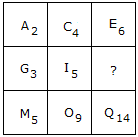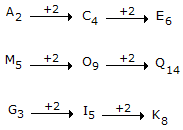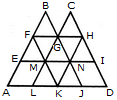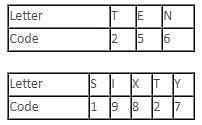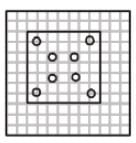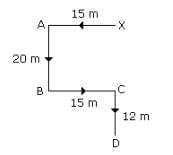SSA Chandigarh JBT Mock Test - 1 - SSA Chandigarh MCQ
30 Questions MCQ Test SSA Chandigarh JBT Mock Test Series 2025 - SSA Chandigarh JBT Mock Test - 1
What does the concept of "paramountcy" refer to in a federalist state?
Which philosopher was condemned to death by drinking hemlock?
Which famous Greek scientist is known for his discoveries in the field of physics, including the principle of buoyancy?
Which of the following tribes is associated with the traditional art of Patachitra, a scroll painting style?
The historic city of Kyoto, known for its traditional temples and geisha culture, is in which country?
Which city was the first in India to have a Municipal Corporation?
Which state has the highest number of Gram Panchayats in India?
Which Indian city is known as the 'Automobile Capital' of the country?
What is the current inflation target set by the Reserve Bank of India (RBI)?
Which of the following is not a measure of poverty in India?
Which article of the Indian Constitution deals with the establishment of the Supreme Court?
Study the following information carefully to answer the given questions
P × Q means P is father of Q
P ÷ Q means P is daughter of Q
P + Q means P is sister of Q
P – Q means P is husband of Q
In M ÷ N × O – P, How O related to M ?
Q.
In G×T+Q÷M, how is M related to G ?
Two matrices are shown in the figure below. Their rows and columns are labelled as (0,1,2,3,4) and (5,6,7,8,9) in the manner shown. Find the correct row-column pairs out of the following matrices that decode to the word - VARY
In each of the following questions, you are given a figure (X) followed by four alternative figures (1), (2), (3) and (4) such that figure (X) is embedded in one of them. Trace out the alternative figure which contains fig. (X) as its part.
Find out the alternative figure which contains figure (X) as its part.

In a row of children facing North, Ritesh is 12th from the left end. Sudhir, who is 22nd from the right end is 4th to the right of Ritesh. Total how many children are there in the row ?
What will be the number at the bottom, if 5 is at the top; the two positions of the dice being as given below:

Find the number of triangles in the given figure.

Directions: In the following question assuming the given statements to be True, find which of the conclusion among given conclusions is/are definitely true and then give your answers accordingly.
Statements:
A > B, B > C, C = D, D < E
Conclusions:
I. B = D
II. B > D
Find the pairs of consecutive even positive integers both of which should be less than 10 and their sum is greater than 11?
In a certain coding system, 'TEN' is coded as 256 and 'SIXTY' is coded as 19827. How will you code 'SIXTEEN' in this coding system?
Statements: All pens are eraser. Some erasers are pencil. Some pencils are ink.
Conclusions: 1) Some ink are eraser. 2) Some pencil are pen. 3) No pen is pencil.
A person starts from his home moves 15 m towards east and then turn 45’ towards its left and walk 15m. After that he moves towards west and stop at the point P after covering 15m. Determine the distance and direction of the point P from his house.
Directions to Solve
In each of the following questions find out the alternative which will replace the question mark.
Question -
CUP : LIP :: BIRD : ?
Direction: If a Paper (Transparent Sheet) is folded in a manner and a design or pattern is drawn. When unfolded this paper appears as given below in the answer figure. Choose the correct answer figure given below.
A piece of paper is folded and cut as shown below in the question figures. From the given answer figures, indicate how it will appear when opened.
Question Figure

Answer figure

Starting from a point X Jayant walked 15 metres towards West, he turned to his left and walked 20 metres. He then turned to his left and walked 15 metres. He then further turned to his right and walked 12 metres. How far is Jayant from the point X and in which direction?



